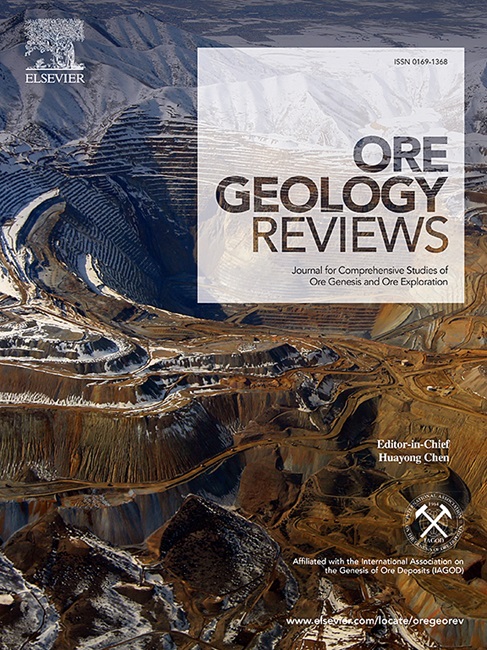A balanced mineral prospectivity model of Canadian magmatic Ni (± Cu ± Co ± PGE) sulphide mineral systems using conditional variational autoencoders
IF 3.2
2区 地球科学
Q1 GEOLOGY
引用次数: 0
Abstract
With the increasing demand for raw materials, innovative exploration techniques are needed to discover large mineral deposits that are accessible from the surface. In recent years, various supervised machine learning techniques have proven effective for mineral prospectivity modelling (MPM). However, the successful application of these techniques has been limited due to the scarcity of known mineral deposits compared to barren regions, which leads to a model imbalance favouring the latter. We address the data imbalance challenge in MPM by proposing a novel generative modelling approach using a conditional variational autoencoder (CVAE). We compare the proposed method with two other data balancing techniques, namely the synthetic minority oversampling technique and class weighting. Furthermore, the efficacy of the balancing strategies is evaluated for three MPM classification methods, including extreme gradient boosting machines (XGBM), random forests, and multilayer perceptrons. We implement and test the approaches by modelling the prospectivity of magmatic Ni (±Cu ±Co ±Platinum group elements) sulphide mineral systems for the Canadian landmass. With an area under the success rate curve of 0.95 for a spatially distinct testing data set, we observe that a combination of the proposed CVAE framework with the XGBM classification model surpasses the other methods. Furthermore, the geographical representation of our XGBM-CVAE model demonstrates a strong association with known Ni mineral occurrences in Canada, along with new prospective regions in underexplored areas.

利用条件变异自动编码器建立加拿大岩浆镍(±铜±钴±PGE)硫化物矿物系统的平衡矿产远景模型
随着对原材料需求的不断增长,需要创新的勘探技术来发现可从地表进入的大型矿藏。近年来,各种有监督的机器学习技术已被证明对矿产远景建模(MPM)有效。然而,这些技术的成功应用一直受到限制,原因是与贫瘠地区相比,已知矿藏稀少,导致模型失衡,偏向于后者。我们提出了一种使用条件变异自动编码器(CVAE)的新型生成建模方法,以解决 MPM 中的数据不平衡难题。我们将提出的方法与其他两种数据平衡技术(即合成少数群体超采样技术和类加权)进行了比较。此外,我们还对三种 MPM 分类方法(包括极梯度提升机 (XGBM)、随机森林和多层感知器)的平衡策略效果进行了评估。我们通过模拟加拿大陆地岩浆镍(±铜±钴±铂族元素)硫化物矿物系统的远景来实施和测试这些方法。在空间上不同的测试数据集上,成功率曲线下的面积为 0.95,我们观察到建议的 CVAE 框架与 XGBM 分类模型的组合优于其他方法。此外,我们的 XGBM-CVAE 模型的地理代表性显示了与加拿大已知镍矿点的紧密联系,以及未充分勘探地区的新远景区域。
本文章由计算机程序翻译,如有差异,请以英文原文为准。
求助全文
约1分钟内获得全文
求助全文
来源期刊

Ore Geology Reviews
地学-地质学
CiteScore
6.50
自引率
27.30%
发文量
546
审稿时长
22.9 weeks
期刊介绍:
Ore Geology Reviews aims to familiarize all earth scientists with recent advances in a number of interconnected disciplines related to the study of, and search for, ore deposits. The reviews range from brief to longer contributions, but the journal preferentially publishes manuscripts that fill the niche between the commonly shorter journal articles and the comprehensive book coverages, and thus has a special appeal to many authors and readers.
 求助内容:
求助内容: 应助结果提醒方式:
应助结果提醒方式:


